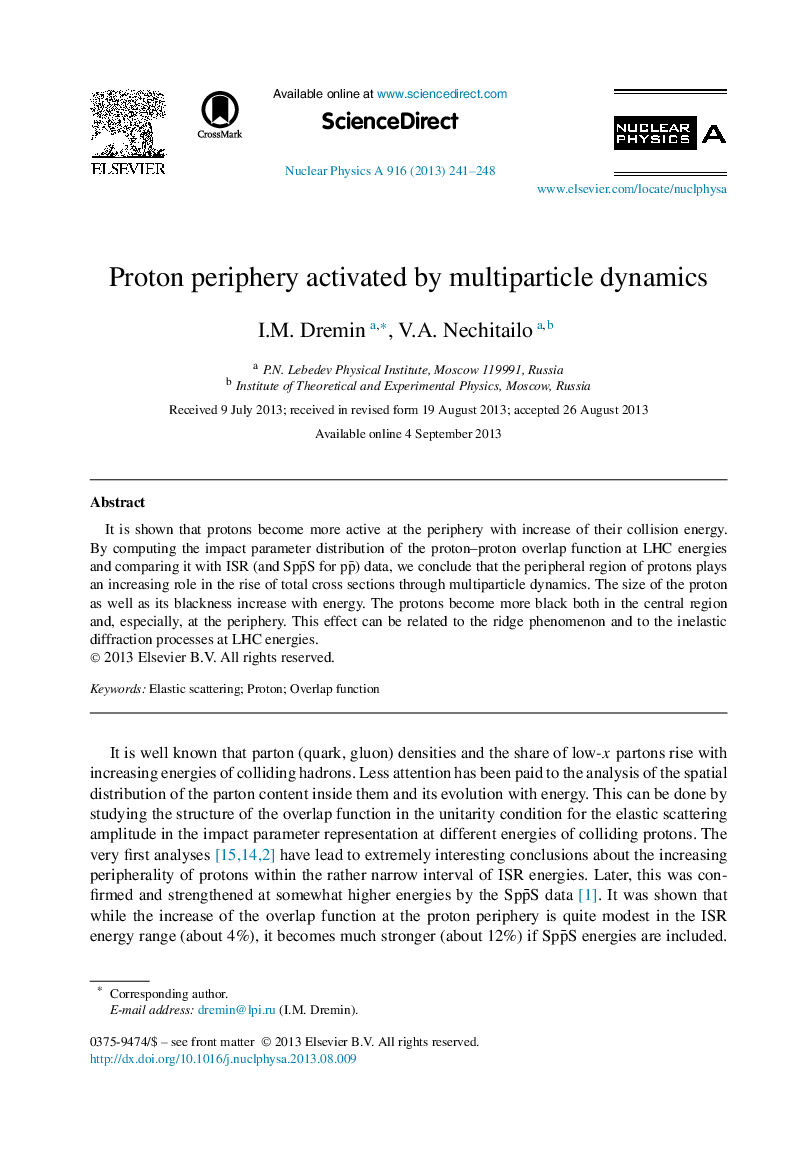| Article ID | Journal | Published Year | Pages | File Type |
|---|---|---|---|---|
| 1836149 | Nuclear Physics A | 2013 | 8 Pages |
Abstract
It is shown that protons become more active at the periphery with increase of their collision energy. By computing the impact parameter distribution of the proton–proton overlap function at LHC energies and comparing it with ISR (and Spp¯S for pp¯) data, we conclude that the peripheral region of protons plays an increasing role in the rise of total cross sections through multiparticle dynamics. The size of the proton as well as its blackness increase with energy. The protons become more black both in the central region and, especially, at the periphery. This effect can be related to the ridge phenomenon and to the inelastic diffraction processes at LHC energies.
Related Topics
Physical Sciences and Engineering
Physics and Astronomy
Nuclear and High Energy Physics
Authors
I.M. Dremin, V.A. Nechitailo,
